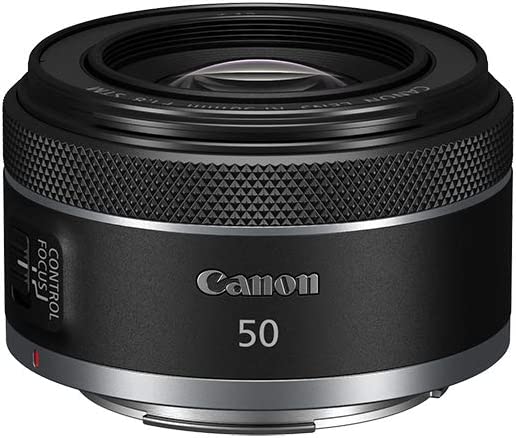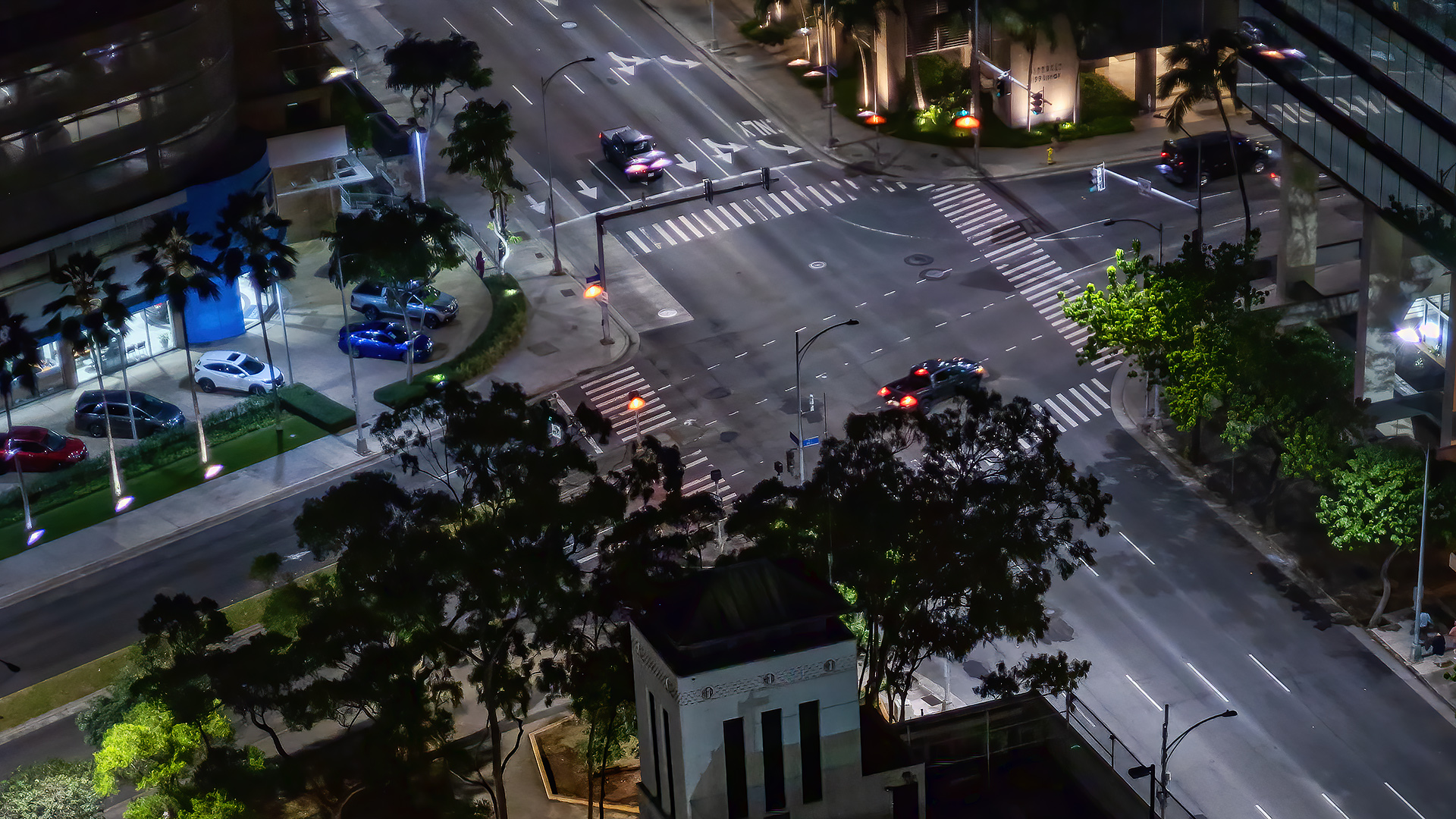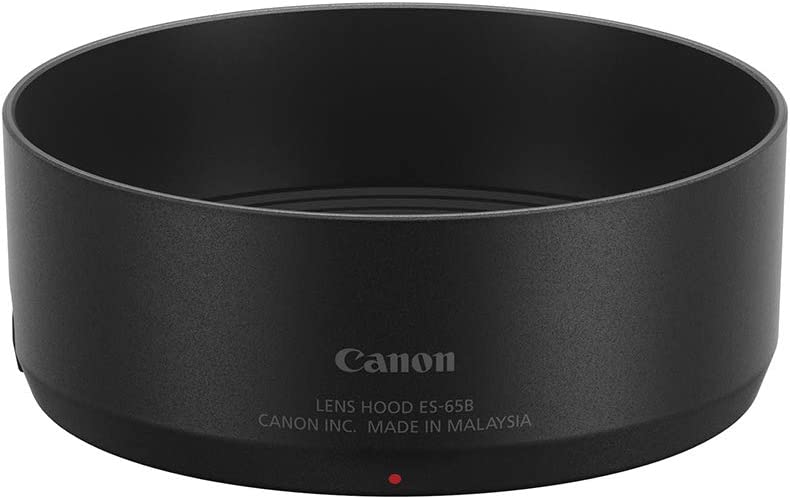•.
Canon RF 50 1.8 STM
Normal Lens for R Series Cameras
Peter
Kun Frary
.
•
As I transitioned to Canon R series cameras, I realized I didn't like using the RF to EF adapter on small EF lenses. So, although I owned a perfectly good EF 50 1.8 STM, I purchased the RF 50 1.8 STM. Herein are my thoughts on the many fabled nifty-fifty for the R system.
Friendly Anole | EOS R7 and RF 50 1.8 STM | F7.1, 1/500 and ISO 100

This review consists of my opinions and observations as a hobbyist. No scientific measurements, MFT charts or pixel peeking comparisons will be found here.
 Compatibility Compatibility
The RF 50 1.8 STM lens works on all Canon EOS R series cameras, both full frame and APS-C (1.6X), such as the EOS R, R6 and R7. It will not fit Canon M series cameras, Canon film SLRs and Canon DSLRs.
On full frame cameras such as the EOS R and R6 MK II, the 46 degree coverage of the RF 50 1.8 STM is equivalent to the sweet spot of the human eye, making it a wonderful general purpose lens. On APS-C (1.6x crop) cameras such as the EOS R7, it has a field of view corresponding to a short telephoto (80mm equivalent), making it a fine portrait lens.
Canon RF 50 1.8 STM | Photo courtesy Canon Inc.

 Construction Construction
The RF 50 1.8 STM is about the same size, weight and build quality as the EF 50 1.8 STM, aka nifty-fifty, albeit cosmetics are more similar to EF-M series lenses. This is a bare bones design: no image stabilization (IS), dedicated MF ring, distance scale or DOF scale. It sports a metal mount, control ring mode switch, matte finish and STM stepping motor for AF operation. I suspect there's a market for an image stabilized 50mm lens, but Canon probably wished to keep a low price point.
The RF 50 1.8 STM uses 43mm filters, rather than 52 or 58mm commonly found on small Canon lenses.
 Image
Quality Image
Quality
This lens has the same basic optical design as the EF nifty-fifty, but with improved close focus ability (.25x vs .20x). The minimum focus distance of 11.8" / 30 cm is a little closer than the EF model.
Wide open, this lens is sharp center frame, but softer and darker (light falloff) in the periphery—perfect for dreamy portraits. Corners sharpen considerably by F2.8 and light falloff is gone by F4. On full frame, it is deadly sharp across the entire frame between F5.6 and F8. On APS-C cameras such as the R7, light falloff and corner softness aren't noticeable because over half the image circle is cropped out.
Tropical Milkweed | EOS R7 and RF 50 1.8 STM | F8, 1/400 and ISO 100

 Coma and Chromatic Aberration Coma and Chromatic Aberration
One of the irritating things about the EF nifty-fifty, when used wide open, was the rendering of off-axis streetlights and stars with comet like flare—an aberration known as coma. The RF 50 1.8 STM suffers from the same condition during night photography, albeit less pronounced and shaped more like airplane wings.
Wide open at F1.8, the center of the frame is clean but coma is present in points of light on the periphery of both full frame and APS-C images. This winged comet flare also exhibits a modest amount of chromatic aberration, i.e., purple fringing.
Thankfully, coma and purple fringing are progressively reduced as one stops down: significantly reduced by F2.8 and nil by F4 (F2.8 for APS-C). Obviously, the RF 50 1.8 STM is not suitable for wide open astrophotography, but is excellent for general photography and city nightscapes at F2.8 and smaller apertures.
Honolulu Fire Station | EOS R and RF 50 1.8 STM | ISO 1250, F1.8 and 1/60 | Coma is present on vehicle headlights and streetlights.

Honolulu Fire Station Crop at F1.8 | Coma is apparent on off-axis points of light from F1.8 to 2.5. Note the coma on traffic and vehicle lights.

 Distortion Distortion
Like the nifty-fifty before it, the RF 50 1.8 STM exhibits noticeable barrel distortion at two meters and nearer. No biggie for flowers but unpleasant for architectural details like doors and windows. At normal distances distortion isn't apparent. Of course, JPEGs are automatically corrected in-camera and RAW files are fixed with a couple clicks in Photoshop, Lightroom and Canon's DPP.
Mint | EOS R7 and RF 50 1.8 STM at ISO 100, F4 and 1/160 sec | Minimum focus distance is just under 12 inches (.25x).

Bokeh
I love the soft whirl of a defocused background, and the seven-blade diaphragm of this lens does not disappoint. Coupled with a large aperture, the RF 50 1.8 STM renders smooth bokeh and pleasantly round highlights. Smooth bokeh combined with a pin sharp subject center frame really make subjects pop. This a great portrait lens for APS-C R series cameras like the R7 or R10.
 Auto Focus Auto Focus
AF speed and reliability are fine for general use, but poky compared to a Nano-USM lens like the RF 24-105 4L IS USM. Like the RF 35 1.8 Macro IS STM, it struggles in servo mode while tracking lizards and flowers swaying in trade winds. However, auto focus is accurate and rarely misses on static and slow moving subjects, even in low light. Focus is achieved by front element extension (a nested barrel). The STM motor is quiet, albeit not silent, emitting a pianissimo "heeek" audible in a quiet room. In fairness, the sound will not be noticed on the street or in a room with normal conversation levels.
AF on my R and R7 was smooth and great for touchscreen pulls and Movie Servo. Focus noise, while extremely low volume, may be recorded by built-in camera mics during quiet video clips. The workaround is to use an external mic (my normal practice for music and educational videos).
Manual focus (MF) is accomplished via focus-by-wire: the control ring—once set to MF in the menu—activates the focus motor and is not mechanically coupled to the lens. Manual focus is smooth, but control isn't as precise as a mechanical ring.
Honolulu Harbor | EOS R and RF 50 1.8 STM | F7.1, 1/400 and ISO 100

 Image Stabilization Image Stabilization
The RF 50 1.8 STM lacks built-in image stabilization (IS). If you own an R series camera with IBIS—in-body image stabilization—Canon claims this lens will deliver up to 8 stops of stabilization! Of course, your results may vary according to how steady your technique is, but it was rare for me to get a blurry photo due to hand shake when shooting with my IBIS equipped R7 and R6 MK II.
 Canon ES-65B Lens Hood Canon ES-65B Lens Hood
The groove on the barrel is for the Canon ES-65B, a locking bayonet hood. It attaches to the outer barrel, protecting the protruding inner barrel from frontal impact and flare. At $30 it's pricey for a tiny chunk of plastic. The JJC ES-65B, a clone of the ES-65B, is available at a fraction of the cost of OEM but is fairly close to OEM quality and appearance.
Canon ES-65B Hood | Support this website by purchasing this hood at Amazon.

 Musings Musings
My first film SLR lens was a 50mm prime—my only lens for a decade. I grew accustomed to the coverage and perspective of 50mm and could pre-visualize a potential image and simply raise the camera to my eye and frame as I imagined. No stepping back and forth or fiddling with a zoom ring. On my full frame EOS R, the 46 degree coverage of this lens rekindled my old skills and picture taking became simple again.
At a mere 160g, I don't mind leaving the RF 50 1.8 STM in my bag even when using other optics. In fact, the petite size and weight make it an ideal backup lens for travel should my big zoom kick the bucket.
Ginger | EOS R7 and RF 50 1.8 STM | F9, 1/200 and ISO 100

 Final Blurb Final Blurb
Like the generations of nifty-fiftys before it, my main disappointment with this lens was the pronounced coma wide open. With that said, this lens is a modest improvement over the EF 50 1.8 STM in sharpness and control of coma.
I love shooting with the RF 50 1.8 STM: easy to carry and images are crisp and detailed. It's versatile, and great for landscapes, portraits, low light and closeups.
Finally, please help support this website by purchasing this lens at Amazon.
 
 Specifications Specifications
| Focal Length |
50mm |
| Maximum Aperture |
f/1.8 |
| Minimum Aperture |
f/22 |
| Lens Mount |
Canon RF |
| Lens Format Coverage |
Full-Frame |
| Angle of View |
46° |
| Minimum Focus Distance |
11.8" / 30 cm |
| Maximum Magnification |
0.25x |
| Diaphragm Blades |
7, Rounded |
| Focus Type |
Auto focus (STM) |
| Image Stabilization |
No |
| Lens Coating |
Super Spectra Coating |
| Filter Size |
43 mm |
| Dimensions (ø x L) |
2.7 x 1.6" / 69 x 40 mm |
| Weight |
5.6 oz / 160 g |
| MAP |
$199 |
Sample Images
07/11/2022 | Revised 09/27/2023

©Copyright 2022-25 by Peter Kun Frary | All Rights Reserved
|


 Compatibility
Compatibility








